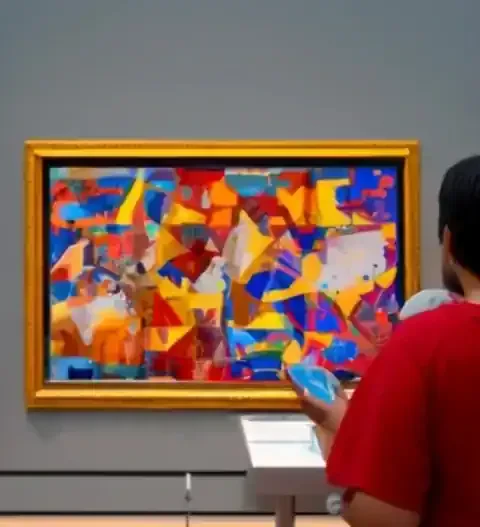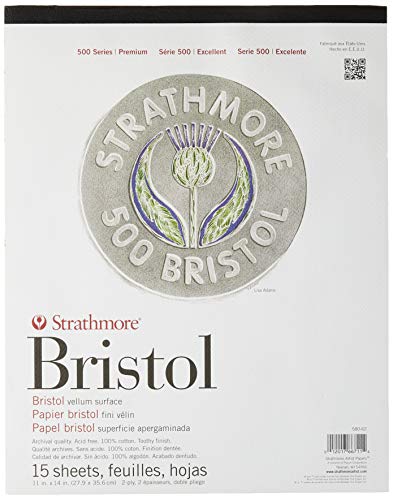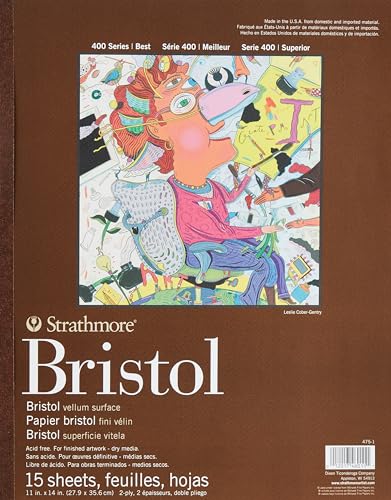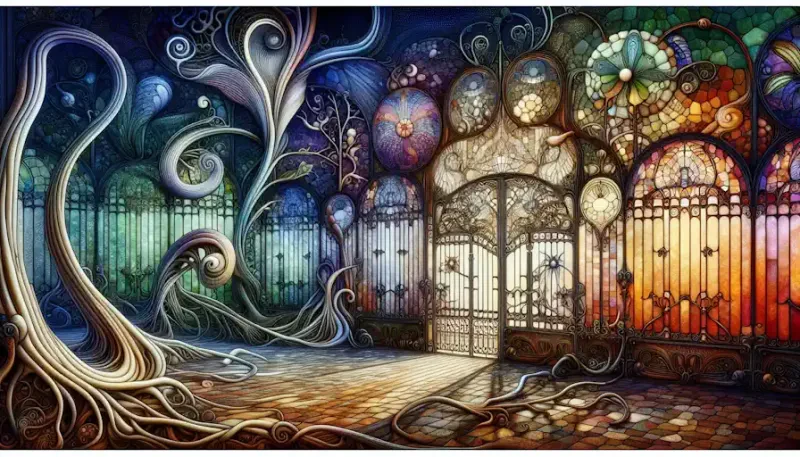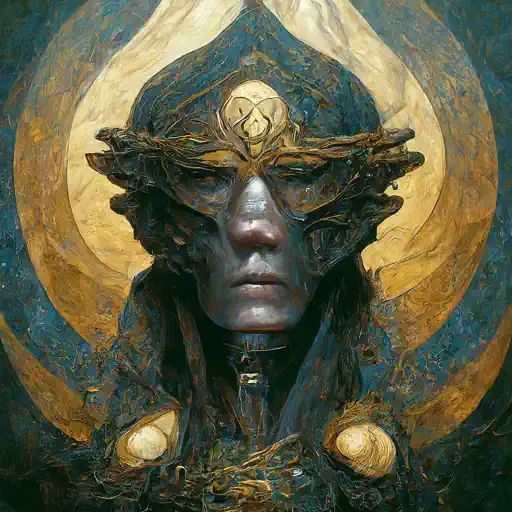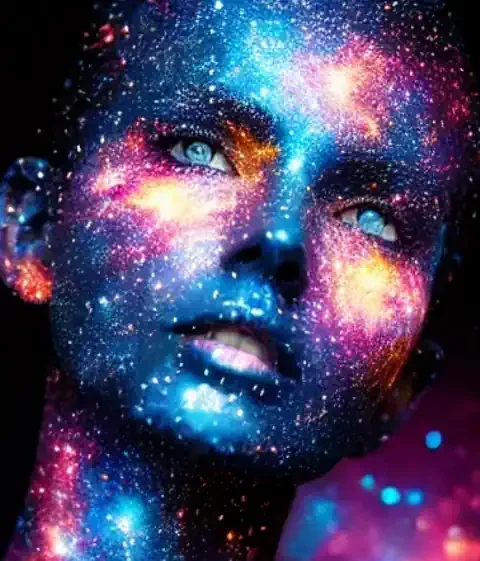Introduction What is Art
Art is a ubiquitous facet of human existence, transcending geographical, cultural, and temporal boundaries. Yet, despite its omnipresence, defining art proves to be an elusive endeavor, as it encompasses a vast array of expressions, interpretations, and functions. In this introductory section, we embark on a journey to unravel the essence of art, examining its significance, complexity, and multifaceted nature.
Definition of Art
The attempt to encapsulate the essence of art within a singular definition has puzzled philosophers, scholars, and artists alike throughout history. Art defies rigid categorization, eluding confinement within the confines of a static definition. At its core, art encompasses creativity, expression, and communication, serving as a vehicle for individuals to convey their thoughts, emotions, and perceptions. Whether manifested through visual, auditory, or literary mediums, art transcends mere aesthetic appeal, inviting viewers to delve into the depths of human experience and imagination.
Artists and theorists have proposed various definitions of art, each offering unique insights into its nature and purpose. For instance, Arthur Danto suggests that art is "embodied meaning," emphasizing the intrinsic connection between artistic expression and its underlying significance. Similarly, Leo Tolstoy posits that art is the "transfer of feeling," underscoring its capacity to evoke emotional responses and forge connections between individuals.
Despite the diversity of perspectives, certain common threads emerge in attempts to define art. Art is inherently subjective, inviting interpretation and eliciting diverse responses from viewers. It transcends utility, existing for its own sake rather than serving practical or utilitarian purposes. Moreover, art embodies innovation and experimentation, pushing the boundaries of creativity and challenging established norms.
Importance of Understanding Art
Amidst the complexities of modern life, the study and appreciation of art hold profound significance, offering insights into human nature, society, and culture. Understanding art fosters empathy and compassion, enabling individuals to connect with the experiences and perspectives of others. Through engagement with diverse artistic expressions, individuals gain a deeper appreciation for the richness and diversity of human experiences, fostering a sense of interconnectedness and mutual understanding.
Furthermore, art serves as a mirror reflecting the values, beliefs, and aspirations of society at large. From the intricate tapestries of ancient civilizations to the avant-garde experiments of contemporary artists, art provides a window into the cultural zeitgeist, chronicling the triumphs, struggles, and aspirations of humanity. By studying art, individuals gain insights into the historical, social, and political contexts that shape artistic production, enriching their understanding of the past and present.
Moreover, art cultivates critical thinking and creativity, nurturing the capacity for introspection and self-expression. Through engagement with art, individuals hone their ability to analyze, interpret, and evaluate complex ideas, fostering intellectual curiosity and aesthetic discernment. Moreover, participation in artistic endeavors empowers individuals to harness their creativity and imagination, fostering innovation and problem-solving skills that are invaluable in an increasingly complex and dynamic world.
Overview of What the Article Will Cover
In the subsequent sections of this article, we delve deeper into the multifaceted world of art, exploring its historical evolution, philosophical underpinnings, societal functions, and psychological effects. We examine the diverse forms and mediums of artistic expression, from the classical masterpieces of the Renaissance to the cutting-edge innovations of contemporary digital art. Moreover, we delve into the subjectivity of art, exploring the myriad interpretations and perspectives that shape our understanding of artistic works. Finally, we reflect on the enduring significance of art in human culture and society, contemplating its capacity to inspire, provoke, and illuminate the human condition.
Historical Perspectives on Art
Throughout the annals of human history, art has played a central role in shaping civilizations, reflecting the aspirations, beliefs, and achievements of diverse cultures. In this section, we embark on a journey through time, tracing the evolution of artistic expression from ancient civilizations to the modern era. We explore the diverse forms, styles, and themes that have characterized artistic production across different historical periods, shedding light on the enduring legacy of art as a testament to human creativity and ingenuity.
Ancient Conceptions of Art
The origins of art can be traced back to the dawn of human civilization, where our ancestors adorned cave walls with intricate paintings, carved figurines, and ceremonial objects. In ancient civilizations such as Mesopotamia, Egypt, Greece, and Rome, art served myriad functions, ranging from religious worship and political propaganda to personal adornment and commemoration of historical events.
Ancient art often reflected the prevailing cosmological beliefs and cultural values of the time, with representations of gods, goddesses, and mythical creatures abound. In Egypt, monumental sculptures and hieroglyphic inscriptions adorned temples and tombs, immortalizing pharaohs and honoring the gods. Similarly, in ancient Greece, art flourished as a celebration of human achievement, with sculptures, pottery, and architecture embodying the ideals of harmony, balance, and proportion.
Evolution of Art Through Different Civilizations
As civilizations rose and fell, art evolved in tandem with shifting social, political, and cultural dynamics. The Middle Ages witnessed the rise of Christian art, characterized by intricate illuminated manuscripts, majestic cathedrals, and religious icons. During the Renaissance, art experienced a rebirth of classical ideals, with artists such as Leonardo da Vinci, Michelangelo, and Raphael revolutionizing painting, sculpture, and architecture.
The subsequent Baroque and Rococo periods saw a proliferation of ornate decoration and dramatic expression, while the Enlightenment sparked a renewed interest in reason, science, and empiricism, influencing artistic production with its emphasis on rationalism and humanism. The 19th century witnessed the emergence of Romanticism, Realism, and Impressionism, each challenging established conventions and exploring new modes of artistic expression.
Major Art Movements and Their Impacts
The 20th century ushered in a period of unprecedented artistic experimentation and innovation, with a myriad of movements such as Cubism, Surrealism, Abstract Expressionism, and Pop Art reshaping the artistic landscape. Each movement responded to the social, political, and cultural upheavals of the time, reflecting the anxieties, aspirations, and contradictions of modern life.
From the avant-garde experiments of Picasso and Braque to the revolutionary concepts of Duchamp and Warhol, modern art shattered traditional boundaries, challenging viewers to reconsider their preconceptions and assumptions about art and reality. Moreover, the advent of new technologies and media, such as photography, film, and digital art, expanded the possibilities of artistic expression, blurring the lines between the virtual and the tangible, the real and the imagined.
Philosophical Views on Art
Philosophers have long grappled with the nature, purpose, and significance of art, offering diverse perspectives that illuminate the complexities of artistic expression. In this section, we delve into the rich tapestry of philosophical thought surrounding art, examining the insights and debates that have shaped our understanding of its essence and value.
Plato's Theory of Art as Imitation
In Plato's seminal work "The Republic," art occupies a contentious position within his ideal state. Plato famously criticized art as mere imitation, arguing that artists create representations of reality that are twice removed from the realm of truth. According to Plato, the physical world is a flawed copy of the eternal Forms, and art further distorts this imperfect reflection by imitating the appearances of things rather than their essential qualities.
Plato's critique of art raises profound questions about the relationship between reality and representation, truth and illusion. While his condemnation of art as deceptive and corrupting may seem harsh, Plato's emphasis on the pursuit of higher truths and ideals underscores the transformative potential of philosophy as a means of attaining knowledge and enlightenment.
Aristotle's Concept of Catharsis
In contrast to Plato's skepticism, Aristotle offered a more nuanced understanding of art's role in human life. In his "Poetics," Aristotle proposed the concept of catharsis, suggesting that art, particularly tragedy, serves as a purgative experience that arouses and purifies the emotions of the audience. Through the vicarious experience of pity and fear elicited by tragic drama, spectators undergo a process of emotional catharsis, achieving a sense of emotional release and moral clarity.
Aristotle's theory of catharsis highlights the therapeutic and transformative power of art, suggesting that it can provide solace, insight, and cathartic release for both artists and audiences. By evoking empathy and compassion, art enables individuals to confront and reconcile with the complexities of human existence, fostering empathy, compassion, and moral growth.
Kant's Theory of Aesthetic Judgment
Immanuel Kant revolutionized aesthetics with his seminal work "Critique of Judgment," wherein he proposed a radical reinterpretation of the nature of beauty and aesthetic experience. Kant argued that aesthetic judgments are subjective yet universal, grounded in the inherent capacity of human beings to apprehend beauty through the faculties of imagination and understanding.
According to Kant, aesthetic judgments are disinterested, meaning that they are made without regard to personal interests or desires. Moreover, aesthetic judgments are characterized by a sense of purposiveness or harmony, wherein the object of perception appears to possess an inherent unity and coherence. Through the experience of beauty, individuals transcend the limitations of empirical reality, attaining a glimpse of the transcendental realm of the noumenal.
Kant's theory of aesthetic judgment revolutionized the field of aesthetics, laying the groundwork for subsequent philosophical inquiries into the nature of art, taste, and aesthetic experience. By emphasizing the subjective yet universal nature of aesthetic judgments, Kant provided a framework for understanding the profound significance of art in human life.
Contemporary Philosophical Perspectives on Art
In contemporary philosophy, a myriad of perspectives continues to inform debates surrounding art, ranging from existentialist inquiries into the nature of authenticity and meaning to postmodern critiques of representation and power. Philosophers such as Jean-Paul Sartre, Maurice Merleau-Ponty, and Jacques Derrida have explored the interplay between art, perception, and consciousness, challenging traditional assumptions and expanding the boundaries of philosophical inquiry.
Moreover, feminist, postcolonial, and critical race theorists have interrogated the politics of representation and identity within the realm of art, exposing the ways in which power dynamics shape artistic production, reception, and interpretation. By centering marginalized voices and perspectives, these critical frameworks offer new insights into the complex interconnections between art, politics, and social justice.
Societal Functions of Art
Art serves as a mirror reflecting the values, beliefs, and aspirations of society, while also shaping and challenging cultural norms. In this section, we explore the diverse functions of art within society, examining its role in fostering cultural identity, promoting social change, and enriching the human experience.
Expression of Culture and Identity
Art serves as a powerful means of expressing and preserving cultural identity, transmitting shared values, traditions, and beliefs across generations. From indigenous rituals and folk traditions to contemporary expressions of cultural hybridity, art reflects the diverse tapestry of human experience, celebrating the richness and diversity of global cultures.
Through art, communities assert their distinctiveness and assert their voices in the face of cultural homogenization and assimilation. Whether manifested through traditional crafts, music, dance, or storytelling, artistic expressions serve as a source of pride and resilience, affirming the dignity and vitality of marginalized communities.
Reflection of Societal Values and Beliefs
Art provides a lens through which to examine the values, beliefs, and contradictions inherent within society. From the grandeur of Renaissance masterpieces to the gritty realism of social realism, artistic movements have reflected and critiqued the prevailing ideologies and power structures of their time.
Moreover, art has the power to challenge entrenched social norms and advocate for social justice and equality. Through provocative imagery, subversive narratives, and acts of cultural resistance, artists confront systemic injustices and amplify the voices of marginalized communities, fostering empathy, solidarity, and collective action.
Art as a Form of Communication and Persuasion
Art serves as a potent form of communication, transcending linguistic and cultural barriers to convey complex ideas and emotions. Whether through visual symbols, musical compositions, or performance art, artists communicate with audiences on a visceral and emotional level, eliciting empathy, reflection, and dialogue.
Moreover, art has the power to inspire and mobilize individuals towards social and political action. From the propaganda posters of war-time propaganda to the iconic imagery of civil rights movements, art has served as a catalyst for social change, galvanizing public opinion and mobilizing collective action.
Role of Art in Social Change and Activism
Artistic expression plays a pivotal role in catalyzing social change and fostering a more just and equitable society. Through art, activists and advocates amplify marginalized voices, challenge dominant narratives, and envision alternative futures grounded in principles of justice, equality, and solidarity.
From grassroots murals and street art to multimedia installations and performance protests, artists and activists collaborate to raise awareness about pressing social issues, mobilize communities, and advocate for transformative change. By harnessing the power of art as a tool for social transformation, individuals reimagine and reshape the world around them, creating spaces for healing, empowerment, and collective liberation.
Psychological and Emotional Effects of Art
Art possesses a profound capacity to evoke emotions, stimulate cognitive processes, and enrich the human experience. In this section, we explore the intricate interplay between art and psychology, examining how artistic expression impacts emotions, cognition, and well-being.
Impact of Art on Human Emotions and Cognition
Art has the power to evoke a wide range of emotions, from joy and awe to sadness and contemplation. Through the use of color, form, composition, and symbolism, artists elicit emotional responses that resonate with viewers on a deeply personal level. Whether through the sublime beauty of a landscape painting or the visceral intensity of abstract expressionism, art has the ability to transport viewers to realms of heightened emotion and imagination.
Moreover, art stimulates cognitive processes such as perception, attention, and memory, engaging viewers in active processes of interpretation and meaning-making. By challenging viewers to decipher visual codes, discern underlying patterns, and construct narratives, art fosters critical thinking skills and enhances cognitive flexibility.
Therapeutic Uses of Art in Psychology
Art therapy harnesses the transformative power of artistic expression to promote healing, growth, and self-discovery. Grounded in the principles of psychotherapy and creativity, art therapy provides individuals with a safe and supportive space to explore and express their emotions, thoughts, and experiences.
Through drawing, painting, sculpting, and other creative modalities, individuals can externalize and process complex emotions, gain insight into unconscious conflicts, and develop coping strategies for managing stress and trauma. Art therapy is widely used in clinical settings to address a variety of mental health issues, including anxiety, depression, PTSD, and substance abuse disorders.
Neuroscientific Studies on Art Appreciation and Perception
Advancements in neuroscience have shed light on the neural mechanisms underlying art appreciation and perception. Neuroimaging studies have revealed that exposure to art activates a network of brain regions involved in reward processing, emotion regulation, and social cognition.
Moreover, research suggests that aesthetic preferences are shaped by a complex interplay of genetic, environmental, and cultural factors. Individual differences in aesthetic sensitivity and preference may be attributed to variations in neural connectivity, neurotransmitter levels, and cognitive biases.
By unraveling the mysteries of the brain's response to art, neuroscientists are gaining insights into the universal principles underlying aesthetic experience, as well as the potential therapeutic applications of art in promoting mental health and well-being.
Forms and Mediums of Art
Artistic expression encompasses a vast array of forms, styles, and mediums, each offering unique opportunities for creative exploration and communication. In this section, we explore the rich tapestry of artistic diversity, from traditional disciplines such as painting and sculpture to cutting-edge innovations in new media and digital art.
Visual Arts: Painting, Sculpture, Photography, etc.
Visual arts encompass a broad spectrum of disciplines, including painting, sculpture, drawing, printmaking, and photography, among others. Each medium offers distinct possibilities for artistic expression, ranging from the tactile immediacy of sculpture to the ephemeral beauty of photography.
Painting, one of the oldest and most revered forms of artistic expression, involves the application of pigment to a surface, creating images that evoke emotion, provoke thought, and capture the imagination. From the luminous landscapes of the Impressionists to the abstract compositions of the Expressionists, painting continues to evolve as artists experiment with new techniques and styles.
Sculpture, meanwhile, engages with three-dimensional space, allowing artists to manipulate form, texture, and volume to create dynamic and immersive experiences. From the classical beauty of ancient Greek statues to the avant-garde experiments of contemporary sculptors, sculpture continues to push the boundaries of artistic innovation and expression.
Photography, a relatively modern art form, revolutionized visual culture with its ability to capture moments in time with unprecedented fidelity and immediacy. From documentary photography to experimental digital manipulation, photographers explore the complexities of the human experience, documenting social phenomena, personal narratives, and the natural world.
Performing Arts: Music, Dance, Theater, etc.
Performing arts encompass a wide range of disciplines that unfold in real-time before an audience, including music, dance, theater, and performance art. These forms of artistic expression engage the senses, emotions, and intellect, creating immersive and transformative experiences for performers and spectators alike.
Music, often described as the universal language of humanity, encompasses a diverse range of genres, styles, and traditions that resonate with audiences across cultures and generations. From the classical masterpieces of Mozart and Beethoven to the improvisational virtuosity of jazz and the infectious rhythms of hip-hop, music reflects the diversity and dynamism of human creativity.
Dance, meanwhile, embodies the expressive potential of the human body, transcending linguistic and cultural barriers to communicate emotion, narrative, and symbolism. From classical ballet to contemporary choreography, dancers captivate audiences with their grace, athleticism, and storytelling prowess.
Theater, a time-honored tradition dating back to ancient Greece, combines elements of literature, performance, and visual design to create immersive narrative experiences. From the tragic dramas of Shakespeare to the avant-garde experiments of experimental theater, the stage serves as a crucible for exploring the complexities of the human condition.
Literary Arts: Poetry, Prose, Fiction, etc.
Literary arts encompass the written word in its myriad forms, including poetry, prose, fiction, non-fiction, and drama. Through language and narrative, writers craft stories, evoke emotions, and explore the depths of human experience, inviting readers into worlds of imagination and insight.
Poetry, characterized by its condensed language and evocative imagery, distills the essence of human experience into verse, exploring themes of love, loss, nature, and spirituality. From the ancient epics of Homer to the contemporary lyricism of contemporary poets, poetry continues to inspire, challenge, and illuminate the human spirit.
Prose, meanwhile, encompasses a wide range of literary forms, including novels, short stories, essays, and memoirs. Through vivid characters, compelling narratives, and resonant themes, writers create immersive worlds that captivate readers' imaginations and provoke thought.
Fiction and non-fiction alike offer insights into the human condition, illuminating the complexities of identity, society, and culture. Whether through speculative fiction, historical novels, or investigative journalism, writers engage with pressing social issues and explore alternative realities, challenging readers to reconsider their assumptions and beliefs.
New Media and Digital Art Forms
In the digital age, artists are harnessing technology to create innovative and immersive experiences that push the boundaries of artistic expression. New media and digital art encompass a wide range of disciplines, including digital painting, video art, interactive installations, and virtual reality experiences.
Digital painting and illustration allow artists to explore new realms of creativity, experimenting with color, texture, and composition in virtual environments. From hyperrealistic digital renderings to abstract digital collages, digital artists are redefining the possibilities of visual storytelling in the digital age.
Video art combines moving images, sound, and interactivity to create immersive and multi-sensory experiences that engage viewers on a visceral and emotional level. From experimental short films to immersive video installations, video artists explore themes of identity, memory, and perception, inviting viewers to contemplate the nature of reality in the digital age.
Interactive installations blur the boundaries between art and audience, inviting viewers to become active participants in the creative process. From immersive soundscapes to participatory performances, interactive artists create dynamic and transformative experiences that challenge traditional notions of spectatorship and authorship.
Virtual reality (VR) and augmented reality (AR) technologies offer new possibilities for artistic expression, allowing artists to create immersive and interactive experiences that transcend the limitations of physical space. From virtual art galleries to augmented reality installations, VR and AR artists are pioneering new modes of storytelling and expression that redefine the boundaries of artistic practice.
The Subjectivity of Art
Art is inherently subjective, inviting diverse interpretations and responses from viewers based on their individual experiences, perspectives, and cultural backgrounds. In this section, we explore the multifaceted nature of artistic perception, examining the factors that influence our understanding and appreciation of art.
Variability of Individual Interpretations
Art elicits a wide range of responses from viewers, reflecting the diversity of human experiences, emotions, and sensibilities. Each individual brings a unique set of biases, preferences, and cultural influences to their encounter with art, shaping their interpretations and judgments in profound and often unpredictable ways.
Moreover, our perceptions of art are influenced by a myriad of factors, including personal experiences, education, socio-economic background, and aesthetic preferences. What one viewer may perceive as beautiful and profound, another may find perplexing or unremarkable, highlighting the inherent subjectivity of aesthetic judgment.
Cultural and Historical Contexts Influencing Perceptions
Art is deeply embedded within cultural and historical contexts, reflecting and shaping the values, beliefs, and aspirations of society at large. The meanings attributed to artistic works are often contingent upon the social, political, and cultural milieu in which they were created and received.
Moreover, our understanding of art is informed by the cultural narratives and discourses that shape our worldview, influencing how we interpret and evaluate artistic expressions. What may be considered groundbreaking or subversive in one cultural context may be met with indifference or hostility in another, underscoring the fluid and contingent nature of artistic interpretation.
Debates on the Objectivity vs. Subjectivity of Aesthetic Judgments
The question of whether aesthetic judgments are objective or subjective has long been a subject of philosophical debate. While some argue that certain aesthetic principles and standards can be objectively discerned based on universal human faculties and cultural norms, others contend that aesthetic judgments are inherently subjective and context-dependent.
Proponents of objectivity point to the existence of aesthetic criteria such as harmony, balance, and proportion that transcend individual preferences and cultural boundaries. Moreover, they argue that certain works of art possess inherent qualities that make them objectively superior or inferior to others, regardless of personal taste or opinion.
Critics of objectivity, however, argue that aesthetic judgments are inevitably influenced by subjective factors such as personal experiences, emotions, and social conditioning. Moreover, they contend that the very notion of artistic excellence is contingent upon changing cultural values and historical contexts, rendering any claims to objectivity untenable.
Art Criticism and Interpretation
Art criticism and interpretation play a crucial role in shaping public discourse and understanding of artistic expression. In this section, we explore the techniques, approaches, and challenges involved in analyzing and interpreting works of art, from traditional forms to avant-garde experimentation.
Techniques and Approaches to Analyzing Art
Art criticism encompasses a variety of methodologies and approaches for analyzing and evaluating works of art. Formal analysis focuses on the formal elements of art, such as line, color, shape, texture, and composition, examining how these elements contribute to the overall aesthetic impact of the work.
Iconographic analysis delves into the symbolic and allegorical meanings embedded within artistic imagery, exploring the cultural, religious, and historical contexts that inform the artist's choices. Contextual analysis situates artworks within broader socio-political, cultural, and intellectual frameworks, examining how they reflect and respond to contemporary issues and debates.
Moreover, psychoanalytic, feminist, and postcolonial approaches offer alternative perspectives on art, highlighting the ways in which individual and collective identities intersect with power dynamics and social structures. By interrogating the underlying assumptions and biases inherent within traditional art criticism, these critical frameworks challenge dominant narratives and amplify marginalized voices within the art world.
Role of Critics in Shaping Public Opinion
Art critics play a crucial role in shaping public discourse and understanding of artistic expression, serving as mediators between artists, audiences, and institutions. Critics offer insights, evaluations, and interpretations of artworks, guiding viewers through the complexities of artistic production and reception.
Moreover, critics contribute to the canonization and valorization of certain artists and movements, shaping the trajectory of art history and influencing the tastes and preferences of future generations. Through reviews, essays, and scholarly publications, critics foster dialogue and debate within the art world, advocating for innovation, diversity, and inclusivity.
However, critics are not immune to bias, subjectivity, and conflicts of interest that may influence their judgments and assessments. Moreover, the proliferation of online platforms and social media has democratized art criticism, giving rise to diverse voices and perspectives that challenge the authority of traditional gatekeepers and institutions.
Challenges of Interpreting Abstract and Conceptual Art
Abstract and conceptual art present unique challenges for interpretation, as they often eschew representational imagery in favor of symbolic, non-referential, or process-oriented approaches. Interpreting abstract art requires viewers to engage with form, color, and texture on a visceral and intuitive level, transcending linguistic and conceptual frameworks.
Conceptual art, meanwhile, emphasizes ideas, concepts, and processes over formal aesthetics, challenging viewers to grapple with the underlying concepts and intentions of the artist. By blurring the boundaries between art and everyday life, conceptual artists provoke questions about the nature of art, authorship, and the role of the viewer in creating meaning.
Moreover, the boundaries between art and other disciplines such as science, philosophy, and politics become increasingly porous in the realm of conceptual art, raising questions about the nature of artistic autonomy, institutional critique, and the commodification of culture.
Art in the Digital Age
The advent of digital technologies has revolutionized the creation, distribution, and consumption of art, opening up new possibilities for creativity, collaboration, and engagement. In this section, we explore the impact of technology on artistic practice, the rise of online platforms, and the ethical considerations surrounding digital art.
Impact of Technology on the Creation and Dissemination of Art
Digital technologies have transformed the way artists create and conceptualize artworks, providing new tools and techniques for experimentation and innovation. From digital painting software and 3D modeling programs to virtual reality and augmented reality technologies, artists are exploring new realms of creativity and expression.
Moreover, digital technologies have democratized the means of artistic production, making it more accessible and affordable for artists from diverse backgrounds to create and share their work. Online tutorials, forums, and communities provide aspiring artists with resources and support, fostering a culture of collaboration and knowledge-sharing.
Furthermore, digital technologies have revolutionized the way artworks are disseminated and consumed, enabling artists to reach global audiences instantaneously through online platforms, social media, and digital exhibitions. The internet has become a vast virtual gallery, where artists can showcase their work, connect with collectors and curators, and participate in global artistic conversations.
Online Platforms and Social Media's Role in Art Appreciation
Social media platforms such as Instagram, Twitter, and TikTok have become powerful tools for artists to share their work, connect with audiences, and build communities. Through curated feeds, hashtags, and algorithms, artists can reach new audiences and engage with followers in real-time, fostering dialogue and interaction.
Moreover, online platforms such as YouTube, Vimeo, and Patreon provide artists with opportunities to monetize their work, generate income through subscriptions, donations, and advertising revenue. Digital marketplaces such as Etsy, Redbubble, and Society6 enable artists to sell prints, merchandise, and digital downloads directly to consumers, bypassing traditional gatekeepers and intermediaries.
However, the proliferation of digital platforms and social media also raises questions about the commodification of art, the role of algorithms in shaping artistic tastes, and the impact of online engagement metrics on artistic practice. Moreover, concerns about copyright infringement, data privacy, and online harassment pose challenges for artists navigating the digital landscape.
Ethical Considerations in Digital Art and Copyright Issues
The digital age has brought about new ethical dilemmas and legal challenges for artists, particularly in the realm of digital art and online content creation. Questions about intellectual property rights, fair use, and artistic attribution are increasingly complex in an era of digital reproduction and remix culture.
Moreover, the rise of deepfake technology, AI-generated art, and algorithmic content raises questions about the nature of authorship, authenticity, and artistic integrity. As algorithms become increasingly sophisticated in generating content indistinguishable from human creation, artists grapple with questions about the uniqueness and value of their work in a digital landscape saturated with automated content.
Furthermore, issues of cultural appropriation, representation, and censorship loom large in the digital realm, as artists navigate the complexities of creating and sharing work in a globalized and interconnected world. The democratization of artistic production and distribution has the potential to amplify diverse voices and perspectives, but also raises concerns about the exploitation and marginalization of vulnerable communities.
The Future of Art
As we stand on the precipice of a new era marked by rapid technological advancement and global interconnectedness, the future of art holds both promise and uncertainty. In this section, we explore emerging trends, challenges, and possibilities shaping the trajectory of artistic expression in the 21st century and beyond.
Emergence of New Artistic Mediums and Technologies
Advancements in technology continue to reshape the landscape of artistic production, opening up new frontiers for experimentation and innovation. From virtual reality and artificial intelligence to biotechnology and bioart, artists are exploring new mediums and techniques that challenge traditional notions of artistic practice and aesthetics.
Virtual reality (VR) and augmented reality (AR) technologies offer immersive and interactive experiences that blur the boundaries between the physical and virtual worlds. Artists are leveraging these technologies to create multisensory environments, interactive installations, and participatory performances that engage viewers in new and transformative ways.
Artificial intelligence (AI) and machine learning algorithms are revolutionizing the creative process, enabling artists to generate novel forms, patterns, and compositions that push the boundaries of human imagination. From generative art and algorithmic music to AI-generated poetry and literature, artists are collaborating with machines to explore the intersection of creativity, technology, and consciousness.
Art as a Catalyst for Social Change and Environmental Activism
In an era marked by profound social and environmental challenges, artists are increasingly using their platforms to advocate for social justice, equity, and sustainability. From climate change activism and environmental art to movements for racial justice and gender equality, artists are mobilizing communities and sparking conversations about pressing issues facing humanity.
Moreover, art has the power to foster empathy, compassion, and solidarity, bridging divides and amplifying marginalized voices within society. By centering diverse narratives and perspectives, artists challenge dominant narratives and inspire collective action towards a more just and equitable world.
Decentralization and Democratization of Art
The rise of blockchain technology and decentralized platforms is revolutionizing the art world, empowering artists, collectors, and audiences with new opportunities for collaboration, ownership, and engagement. Blockchain-based platforms such as NFTs (non-fungible tokens) enable artists to tokenize and sell digital assets, creating new revenue streams and opportunities for monetization.
Moreover, decentralized autonomous organizations (DAOs) and community-driven platforms are democratizing the curation and distribution of art, enabling artists to bypass traditional gatekeepers and intermediaries. By fostering peer-to-peer networks and direct interactions between creators and consumers, these platforms are reshaping the dynamics of the art market and promoting greater inclusivity and transparency.
Challenges and Opportunities in the Digital Age
While the digital age presents unprecedented opportunities for artistic expression and innovation, it also poses significant challenges and risks for artists navigating a rapidly evolving landscape. Issues such as digital piracy, data privacy, and algorithmic bias raise questions about the ethical implications of technology on artistic practice and cultural production.
Moreover, the proliferation of online platforms and social media has led to concerns about the commodification and homogenization of art, as artists compete for attention and recognition in an oversaturated digital marketplace. Balancing the demands of artistic integrity, financial sustainability, and ethical responsibility requires careful navigation and critical reflection on the part of artists and stakeholders.
Summary
Art, an ever-evolving expression of human creativity, has captivated hearts and minds across cultures and epochs. In our exploration, we ventured through historical epochs, philosophical musings, societal functions, psychological nuances, and the transformative impact of technology on the artistic landscape.
We began by tracing art's origins in ancient civilizations, recognizing its diverse forms and functions as a reflection of cultural beliefs and societal aspirations. Philosophical inquiries illuminated the essence of art, from Plato's skepticism to Kant's aesthetic judgments, shedding light on the intricate interplay between perception and reality.
Art's societal functions emerged as a mirror reflecting cultural identity, values, and social change. We witnessed its power to evoke emotions, stimulate cognitive processes, and heal through therapeutic modalities like art therapy. Moreover, art served as a catalyst for social movements, amplifying marginalized voices and challenging entrenched norms.
In the digital age, art transcended physical boundaries, embracing new mediums and technologies to redefine artistic practice and distribution. Online platforms democratized access to art, while also posing ethical dilemmas surrounding ownership, authenticity, and commodification.
Looking to the future, we envisioned a landscape ripe with possibilities and challenges. Emerging technologies like VR, AI, and blockchain promised to revolutionize artistic expression, while artists continued to advocate for social justice and environmental activism. Decentralization and democratization held the potential to reshape the art world, fostering inclusivity and transparency amidst a rapidly changing cultural landscape.
As we conclude our journey, one thing remains clear: art, in all its myriad forms, continues to inspire, provoke, and challenge us, transcending boundaries and connecting us to our shared humanity. Through the lens of art, we glimpse the beauty, complexity, and infinite possibilities of the human experience.
